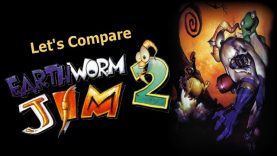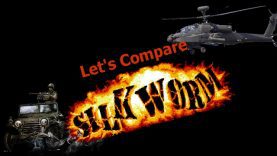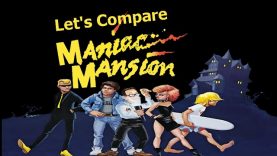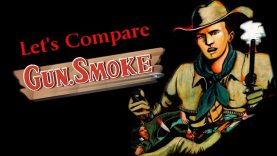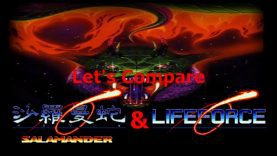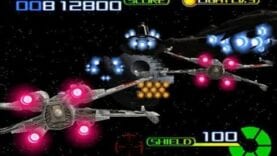Let’s Compare (Star Wars) The Arcade Game
Gaming History Source
Video Locations:
1. Arcade 0:28
2. Atari 2600 3:06
3. Acorn Electron 5:25
4. BBC Micro 8:38
5. Amstrad 12:18
6. Atari 5200 16:12
7. DOS 18:41
8. Colecovision 21:49
9. ZX Spectrum 24:48
10. Commodore 64 ( Atari Version ) 28:17
11. Commodore 64 ( Domark Version ) 31:30
12. Atari ST 35:09
13. Amiga 38:48
14. Vectrex 42:28
( Home Brew ) Star Fire
15. Sharp X68000 44:14
Star Wars Attack on the DeathStar
16. 32X ( Star Wars the arcade game ) 48:43
17. Arcade Sega Model 3 52:41
( Star Wars Trilogy ) Yavin Mission
Complete playthrough of Star Wars Trilogy
Description Source:
http://en.wikipedia.org/wiki/Star_Wars_%281983_video_game%29
Star Wars is an arcade game produced by Atari Inc. and released in 1983. The game is a first person space simulator, simulating the attack on the Death Star from the 1977 film Star Wars. The game is composed of 3D color vector graphics. This game was developed during the Golden Age of Arcade Games and is considered the #4 most popular game of all time according to the readers of Killer List of Videogames.
Gameplay:
The player assumes the role of Luke Skywalker (“Red Five”), as he pilots an X-wing fighter from a first-person perspective. Unlike other arcade games of similar nature, the player does not have to destroy every enemy in order to advance through the game; he must simply survive as his fighter flies through the level, which most often means he must avoid or destroy the shots that enemies fire. Each hit on his craft takes away one shield (of the six he started out with), and if he runs out of shields and takes another hit, the game ends.
The player’s ultimate goal is to destroy the Death Star through three attack phases.
In the first phase of the game, the player begins in outer space above the Death Star. He must engage in a dog fight with Darth Vader and enemy TIE fighters.
In the second phase (occurring beginning with the second wave), the player reaches the Death Star’s surface as laser turrets on towers rise to confront the player. If the player manages to destroy all of the towers (actually a certain number of turrets–more can be seen), he will receive a sizable point bonus.
In the final scenario, the player finds himself speeding through the trench of the Death Star, avoiding obstacles and blasting gun turrets until finally firing a proton torpedo at the correct time for a direct hit on the exhaust port target. What follows, if the player is successful, is the Death Star exploding in a multitude of different colors, plus the awarding of one bonus shield (on factory settings). If the player manages to destroy the Death Star without firing at anything but the exhaust port, he will receive a sizable point bonus for “using the force.”
The game then resets to the first phase. Each successive Death Star run greatly increases the difficulty; TIE Fighters shoot more often, there are more Laser towers and batteries in the second round, and there are many more obstacles and laser fire during the trench run. Unlike the movie, where the units shoot beams similar to lasers, the enemy units in this game shoot projectiles resembling fireballs, in order to give the player a chance to destroy the fired shots.
This game, along with The Empire Strikes Back and Return of the Jedi, was also included as an unlockable extra in the Nintendo GameCube game Star Wars Rogue Squadron III: Rebel Strike. In the United States and some European countries, customers could get the GameCube version of the game for free when they pre-ordered Rebel Strike.
If you would like to support Gaming History Source. You can do so by making donations at. http://www.patreon.com/ghs





